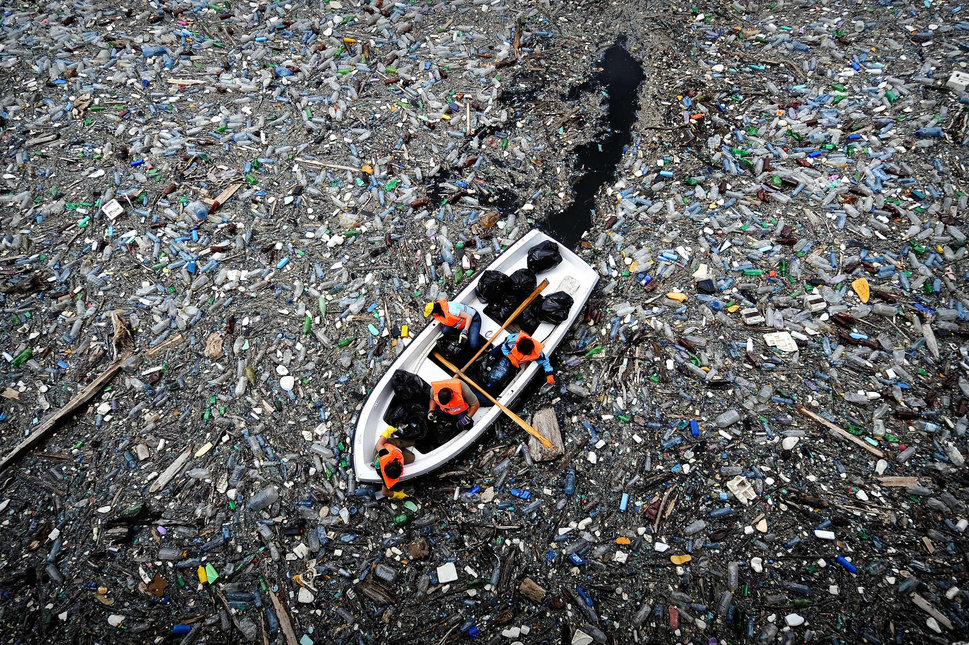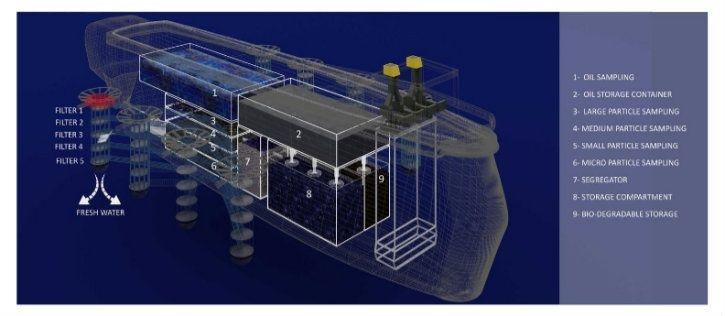Hello there! Yes, you! You just ignored the advertisement on the television set - the iDEA 4G commercial. You looked past it like every other issue that is left unaddressed! Was the commercial not catchy? Was it just another beach scene where ‘auntyji’ tosses some litter and a random girl educates and sensitives her on the issue of keeping clean? Unless an issue costs our lives, we do not pay attention.
We fail to realise that the solution to a problem starts with awareness, research and the measures to contain it!

12 year old Pune based Haaziq was moved by a documentary on the ocean pollution and decided he had to do something about it. To visualise the magnitude of this pollution, lets stack two litre plastic bottles from here to the moon and back, TWICE! The problem is so severe that not only the bed of the ocean but a layer at the depth of 12 km below the surface of the ocean, is heavily polluted with floating plastic and pollutants. Ocean pollution is not an oft discussed subject and we still do not understand the exact magnitude of it. Although there is research presenting statistics on it, it is sad how we have not fully comprehended the damage we done to earth. A few days ago, there was research that stated that the salt we consume has roughly about a 92% chance of containing micro - plastics.

Annually over a million birds and 1,00,000 marine animals die because of plastic in oceans. About 66% of all fish caught across the world have ingested plastic in some way or another. What one should realise about marine animals dying from plastic is not the number of deaths, rather the process which leads them to death.
The thing with the death of animals consuming plastic is that it’s not an instantaneous death. Lots of these birds and animals eat the plastic thinking it is food, only for the plastic to get stuck in their stomach or intestinal lining. Some creatures have downward facing spines in their throats which prevent the possibility of regurgitation. Most animals are unable to get the plastic outside their body once they swallow it. Which leads to either blockage in their stomach and intestine. This prevents them from consuming food leading to starvation. Imagine not being able to eat anything and starving to death slowly and painfully.
Did you know many sea animals commonly deal with “bubble butts”. It makes them float as a result of trapped gas caused by harmful decomposition of marine debris. Not only does it lead to starvation it also makes them an easy target for predators.
The plight and struggle of the aquatic life, trying to survive the waste dumped into the oceans moved 12-year-old Haaziq Kazi to come up with an innovative solution to this hazard. And that's how ERVIS was born, a futuristic-ship with saucers attached, that can 1)clean waste matter floating on the ocean surface 2) analyse the waste collected and 3) stop waste at source, prevent it from getting disposed by ships.
How does ERVIS work?
ERVIS is a bleeding edge design of an intelligent ship. This ship is essentially powered by hydrogen and renewable natural gas with various compartments and saucers surrounding it. The saucers, float on the surface, gravitate to create a whirlpool to pull the waste towards its centre. These saucers have a central inlet which swallows the waste and are connected via a tube to various chambers in the ship. As per design, there is a sensor or mechanism on its bottom which detects marine life, water and plastic while passing on from the ocean. Marine life and water are left out and only the waste is sucked in.

There are four chambers which are for large, medium, small & micro waste respectively. These chambers include an oil chamber which collects waste oil. Based on the type of plastic it collects, ERVIS compacts and stores it. Once the waste enters the chambers, ERVIS analyses, segregates and compacts it, and pumps the filtered water back into the ocean, without harming any marine life in the process. The waste is collected and analysed, it's then sent back to land for recycling.
Haaziq explained,“While designing ERVIS, I was cautious and I didn’t want it to add to the problem of ocean pollution which current ships in oceans do. Around 20 percent of waste in oceans is contributed by marine ships so I wanted ERVIS not to be a contributor to it. From start, I wanted ERVIS to be powered by renewable energy sources like solar and renewable natural gas".
He further added, "The initial design principle of ERVIS was to go in deep ocean and deal with large ocean waste problem but I realised closer to home we have 2 of the top 10 rivers in the world who contribute to the ocean waste problem – Indus and Ganga. India also has a very large coast line suffering from same waste problem. While playing with the model, I realised that it could be scaled down to man rivers and seas, essentially any water body to collect waste and clean it”.
Long live ERVIS and its motive of cleaning the oceans and restoring the natural habitat! Haaziq derives his inspiration from Elon Musk and has a vision of turning his dream project into a beneficial ship under Tesla. He is also working with conservation organisations and forums to create awareness about the ill effects of ocean plastic pollution and ways to prevent it.
References -



